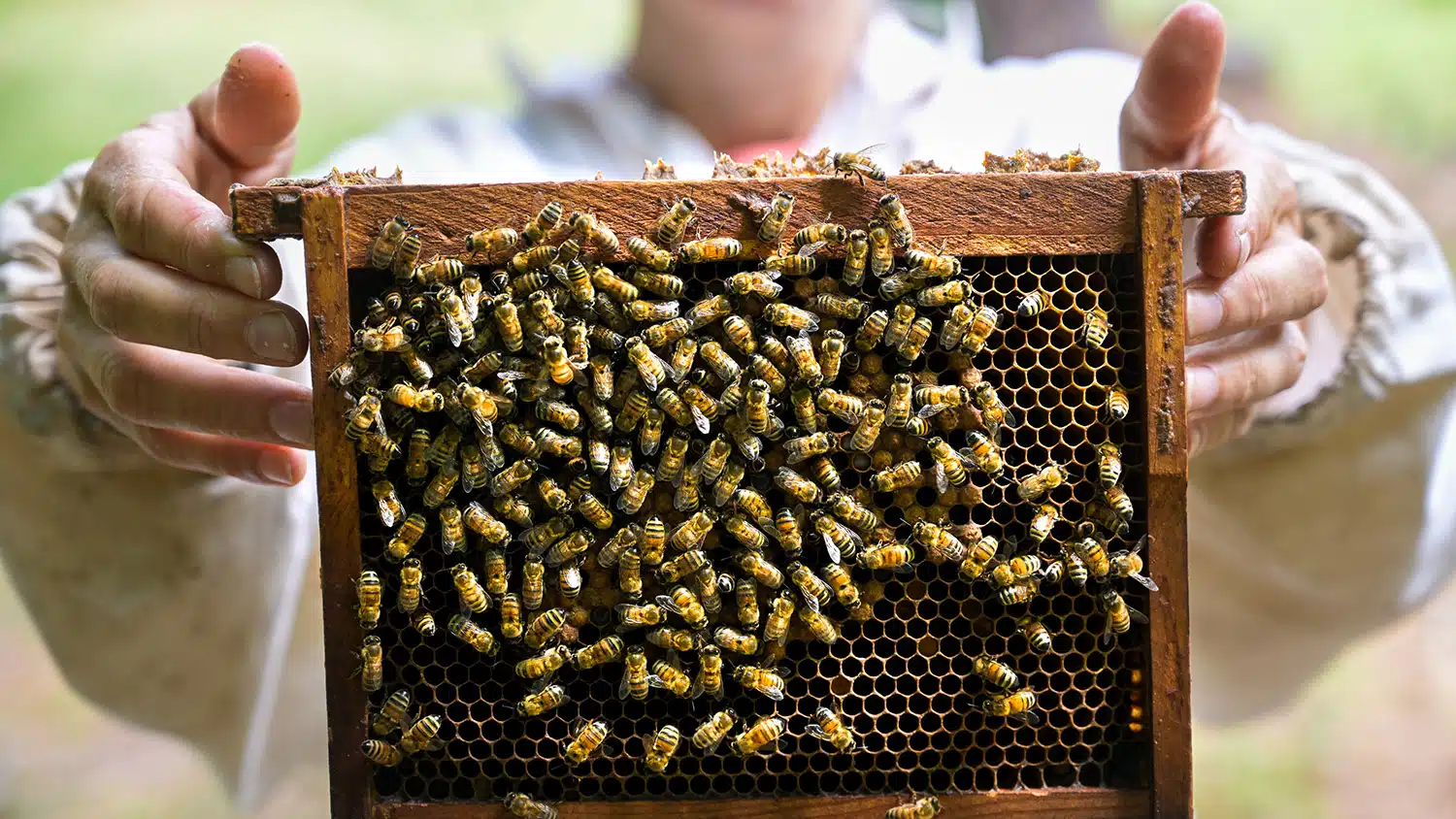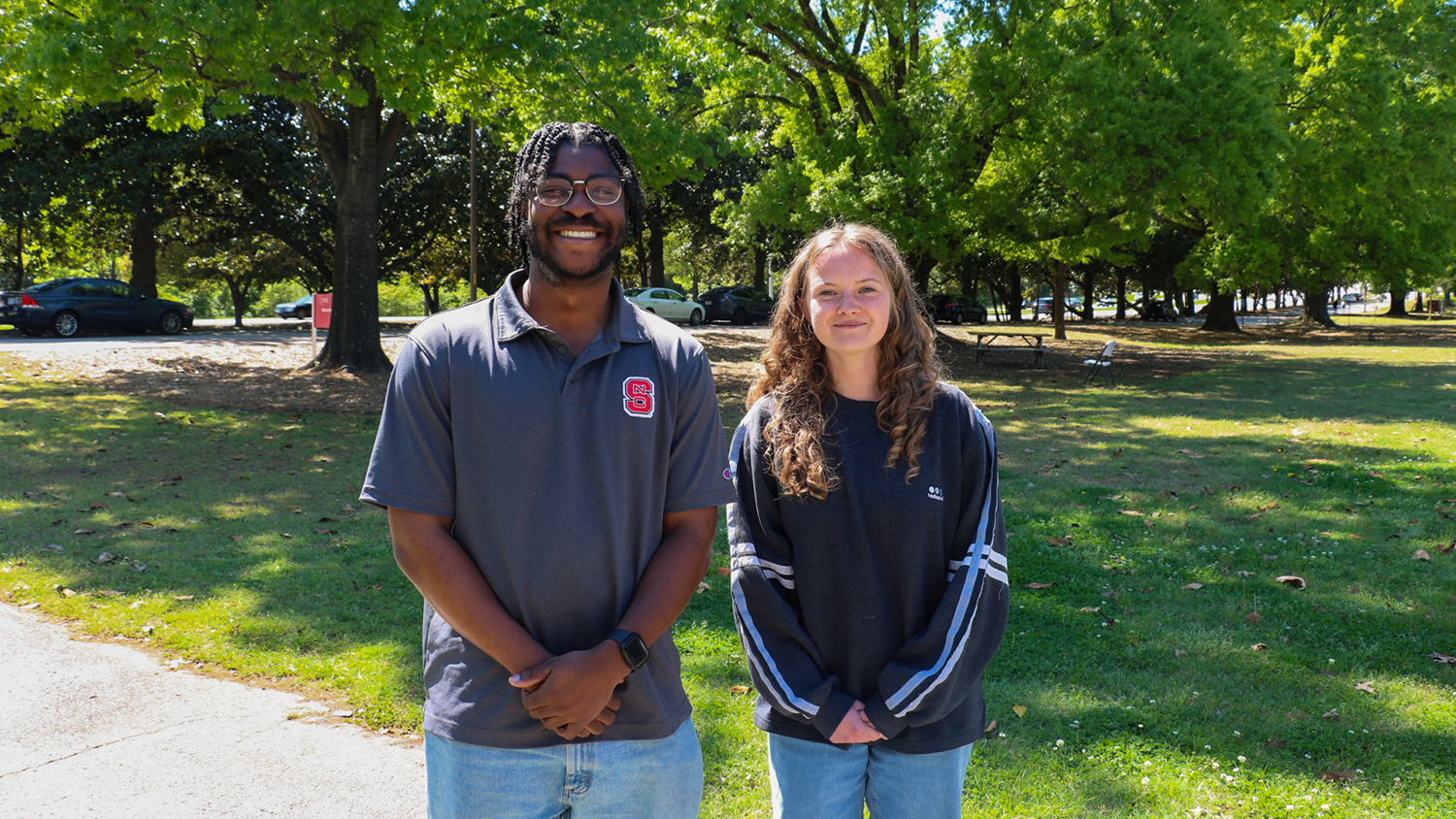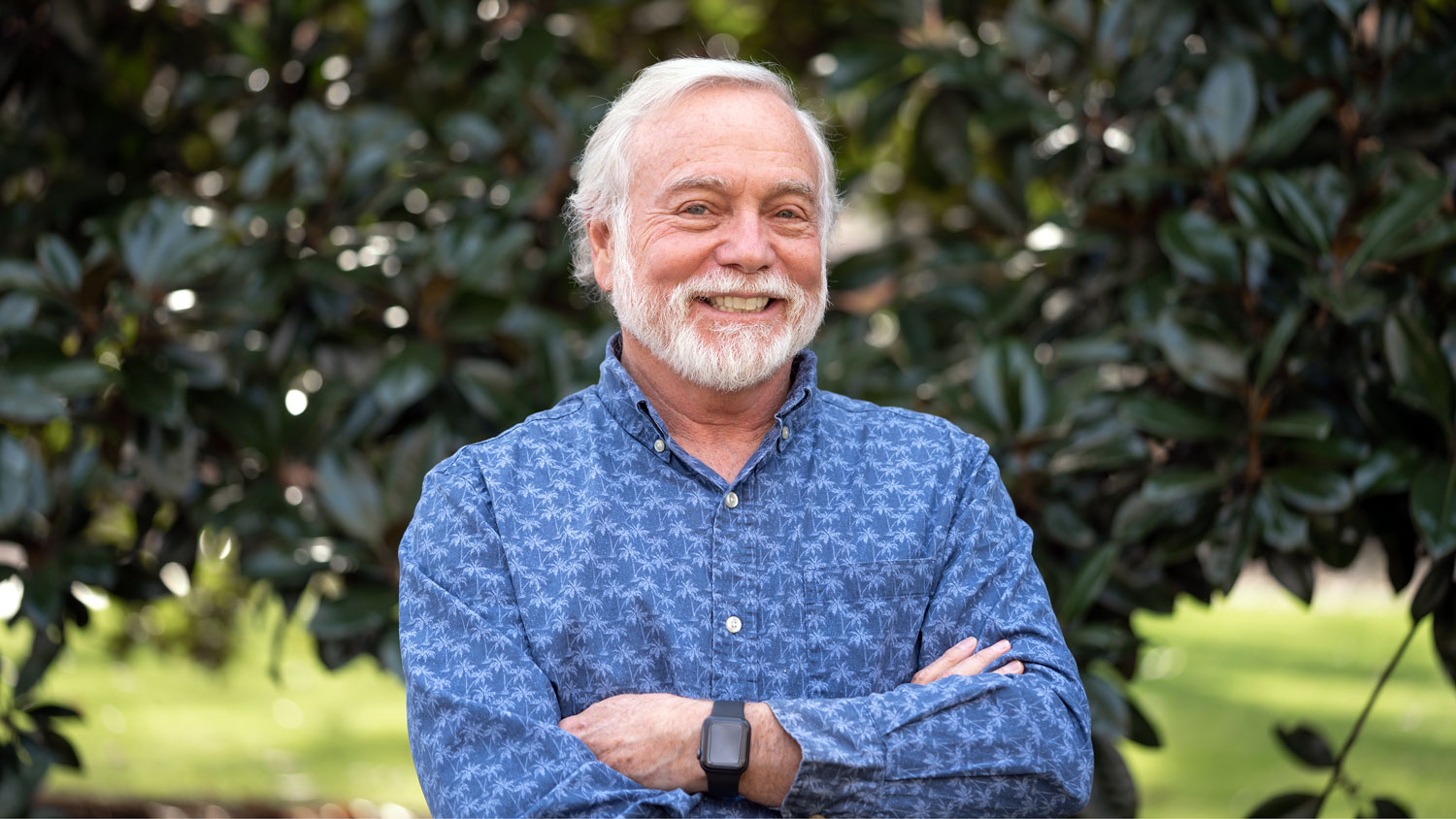Drop by drop: Soil scientists investigate ways to safely treat wastewater for reuse
When N.C. State University soil scientist Mike Hoover decided more than two decades ago to put a series of advanced septic systems above ground at a field research site near Pittsboro, Chatham County’s Cooperative Extension Center was doing something no one had ever done before: creating a place where people could see and understand how various small-scale, on-site wastewater treatment technologies worked.
County health departments, state regulatory agencies, technology consultants and product manufacturers all pitched in to develop the hands-on training site. Other universities and agencies followed suit, and today there are some 25 such systems located around the world.
The latest hands-on training site, based on the model developed by Hoover and his colleagues, is being planned for Indonesia. The Research Triangle Institute (RTI) is working in partnership with a local university and other organizations to develop a wastewater training and demonstration center that would serve as a knowledge and training hub and promote appropriate sanitation technologies throughout the region. According to RTI’s Dave Robbins, the goal is to establish similar demonstration facilities in targeted universities in South and Southeast Asia to accomplish technology transfer and real capacity building for on-site and decentralized wastewater treatment, reuse and recycling.
The site that Dr. Hoover and his colleagues first built in Chatham County during 1989-90 was moved to N.C. State University’s Lake Wheeler Road Field Laboratory 15 years ago, and since then, he and his soil science colleagues have continued to break scientific ground as they help address one of the biggest challenges facing our nation: how to ensure a safe and plentiful water supply in the face of projected water shortfalls.
Hoover and Dr. Sushama Pradhan, a soils and on-site water technology research scientist, use the field lab site to demonstrate how new decentralized technologies can be used to produce non-potable waters – those that aren’t used for drinking, cooking, showering or bathing – at the point where the water is initially used, whether it be in an individual home, a small business or small communities. Recycling the water for such uses as landscape irrigation, toilet flushing and building chiller systems, Hoover said, not only extends the water supply, it also uses less energy than it would take to pump the wastewater to a centralized facility for treatment before sending it back again to the community via another separate set of pipelines.

In addition to demonstrating the technologies, Hoover and Pradhan are working with the U.S. Centers for Disease Control and Prevention (CDC) to wrap up research into technology performance and health effects of such decentralized water reuse technologies. They are studying seven systems employing different technologies to treat and reuse wastewater for non-potable purposes at apartment buildings, resort communities, schools and clusters of houses. The systems are in New York, North Carolina and Texas and have flows ranging from about 1,000 to 500,000 gallons a day. They are also working with smaller systems, including those for single-family homes whose owners want to stop wasting drinking water in Orange and Davidson counties, as well as in Los Angeles County, Calif.
The CDC research is the first-ever conducted in the United States on decentralized water reuse for non-potable purposes. “Australia and Germany are literally 10 years ahead of us when it comes to decentralized reuse,” Hoover said. “Research in other countries has shown the safety, but people here want research done here, in the United States.”
Pradhan noted that decentralized reuse can be successful in rural, suburban and urban communities. “Even inside the city center, where public sewers already exist, decentralized reuse can occur using a process sometimes called sewer-mining,” she said.
As an example, she pointed to the Visionaire, a 35-story building with 251 condominiums in lower Manhattan. New York City’s drinking water and sewer systems serve the building, but the building also has an on-site wastewater treatment system in its basement.
“The non-potable waters produced from the sewage are then pumped back up into the building after treatment. These waters are acceptable for use for toilet flushing, grounds irrigation, water display fountains, makeup waters for chillers and other similar uses,” she said.
“This approach diverts about half of the sewage that would normally be going into New York City’s sewers. Once this water is treated, it gets used a second time, a third time and so on. This reduces drinking water use by 48 percent in this high-rise community,” she added. “Not only does it save money, but this approach also extends the life of the city’s drinking water supply by as much as 30,000 gallons a day. The capacity of the city’s wastewater treatment plant is also extended by an even larger amount.”
Closer to home, Pradhan and Hoover have seen increased interest in decentralized water reuse. At a new city park in Raleigh, for example, there are plans to provide reclaimed water for toilet flushing. Recycled waters are also being used to irrigate golf courses from Lexington in the Piedmont to Corolla in the Outer Banks. And a high school-middle school complex in Greensboro uses harvested rainwaters and locally treated wastewaters for toilet and urinal flushing as well as for athletic field irrigation. Many decentralized reuse technologies are also demonstrated at the Lake Wheeler Road Field Laboratory facility.
Meanwhile, with the support of the Irish company Anua, which has its North American headquarters in Greensboro, the N.C. State University team has been assessing pilot wastewater treatment and water reuse technologies at the T.Z. Osborne Wastewater Treatment Plant in Greensboro.
The research the team conducts is just part of what Hoover believes it will take to push past the so-called “yuck factor” and gain public acceptance of decentralized wastewater reuse. That’s why, as part of his responsibilities as a Cooperative Extension specialist, Hoover gives frequent decentralized wastewater reuse presentations, demonstrations and workshops for scientists, system operators, environmental health specialists, engineers, builders and developers.
For example, this August, he’s speaking at the N.C. Green Industry Council’s second annual water symposium at N.C. State and in September nationally at the annual WateReuse Association Symposium in Florida.
The CALS Soil Science Department’s Extension team has also developed one-day and two-day short courses on-line, including virtual tours of reuse sites, that provide lessons learned and real-life experiences from those whom Hoover characterized as a “who’s who” of decentralized wastewater reuse.

Courses and presentations also take place at the Lake Wheeler Road site. “Here people can get their hands on the technologies,” Hoover said, “and be able to ‘kick-the-tires’ in person, so to speak.”
At a January workshop, Pradhan discussed the CDC research and showed participants one of the German technologies that can be installed in a home’s basement and treat wastewater for reuse within the home and its yard. Dr. Barrett Kays, an N.C. State University Soil Science Department alumnus who leads the Raleigh-based environmental consulting firm Landis Inc., discussed several pioneering wastewater reuse systems that he’s helped develop.
Hoover told workshop participants that centralized wastewater reuse has gained increasing acceptance in recent years, with cities and large communities treating wastewater and using separate pipelines to carry the treated non-potable water to customers for irrigation and other uses. “But decentralized wastewater reuse is still in its infancy in our state and in the U.S., as well,” he said.
Many North Carolinians – about 50 percent, he said – will never be served by such centralized systems and instead rely on septic systems. If these people were interested in water reuse, they would need the types of decentralized technologies that Pradhan and Hoover are studying.
While the N.C. State scientists stress the efficiency of decentralized wastewater reuse, they also emphasize the need to treat water to the safety level that matches the water’s intended uses, instead of treating all water to drinking water standards. As Pradhan noted, getting river water, brackish groundwater and ocean water clean enough to drink can get expensive and takes a lot of energy. Yet every day the average American uses 400 gallons of water treated to drinking water standards.
“Only three of those gallons are consumed,” she said. “Some more is used for cooking food and taking showers, but the vast majority of the water we bring into our houses doesn’t need to be treated to the same extent as drinking water. So that’s why our team is focusing on the non-potable water supply – on having water supplies that are fit for their purpose.”
Hoover added that locally treating water supplies based on their intended purposes using this decentralized wastewater reuse approach is more efficient and less expensive than many centralized reuse options.
“It’s clear we need to improve and enhance our water supply choices. We need to be sure there is more than just one menu choice for the future of water,” Hoover said. “Decentralized reuse for non-potable water supply production is one means of doing that.
“Decentralized wastewater reuse works facility by facility, community by community, home by home, business by business,” he added. “A drop of water becomes a quart, a quart becomes a gallon, a gallon becomes thousands of gallons. Thousands of gallons become millions of gallons. Millions of gallons are a water supply for a community. And it adds up.“Decentralized wastewater reuse is a way of extending our water supply drop by drop.
— Dee Shore
- Categories:


